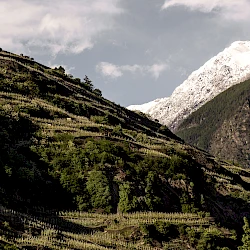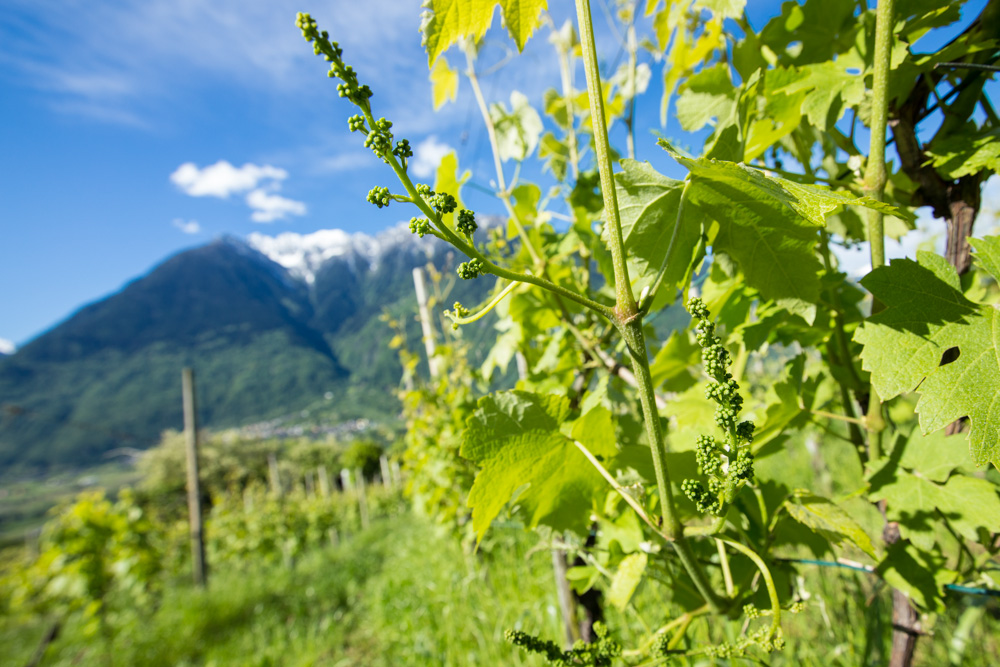
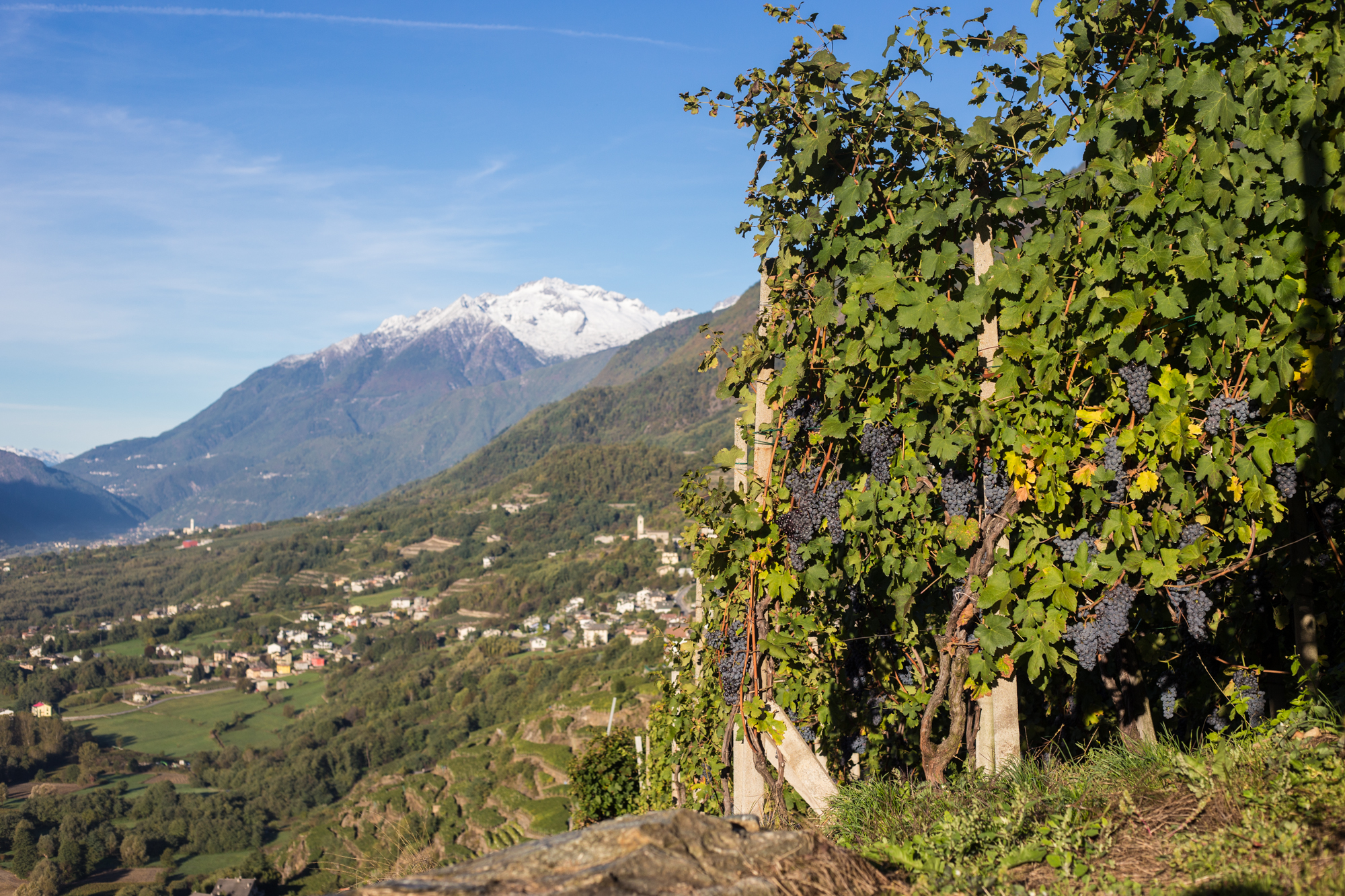
Chiavennasca is the name of Nebbiolo grape from Vatellina, in assonance with the neighbouring Chiavenna Valley and with some local dialect expressions -ciuvenasca- vineyard rich in lymph or -ciu-vinasca- a variety most likely to become wine.
Nebbiolo grape among Valtellina terraces it’s history, it’s an unbreakable bond with the landscape and the people who have shaped it. The grapes have certainly been present on the territory since 1600, along with other grape varieties which were then abandoned. Nebbiolo grape is the one which was chosen for the reconstruction of Valtellina vineyard after the phylloxera epidemic at the end of 1800.
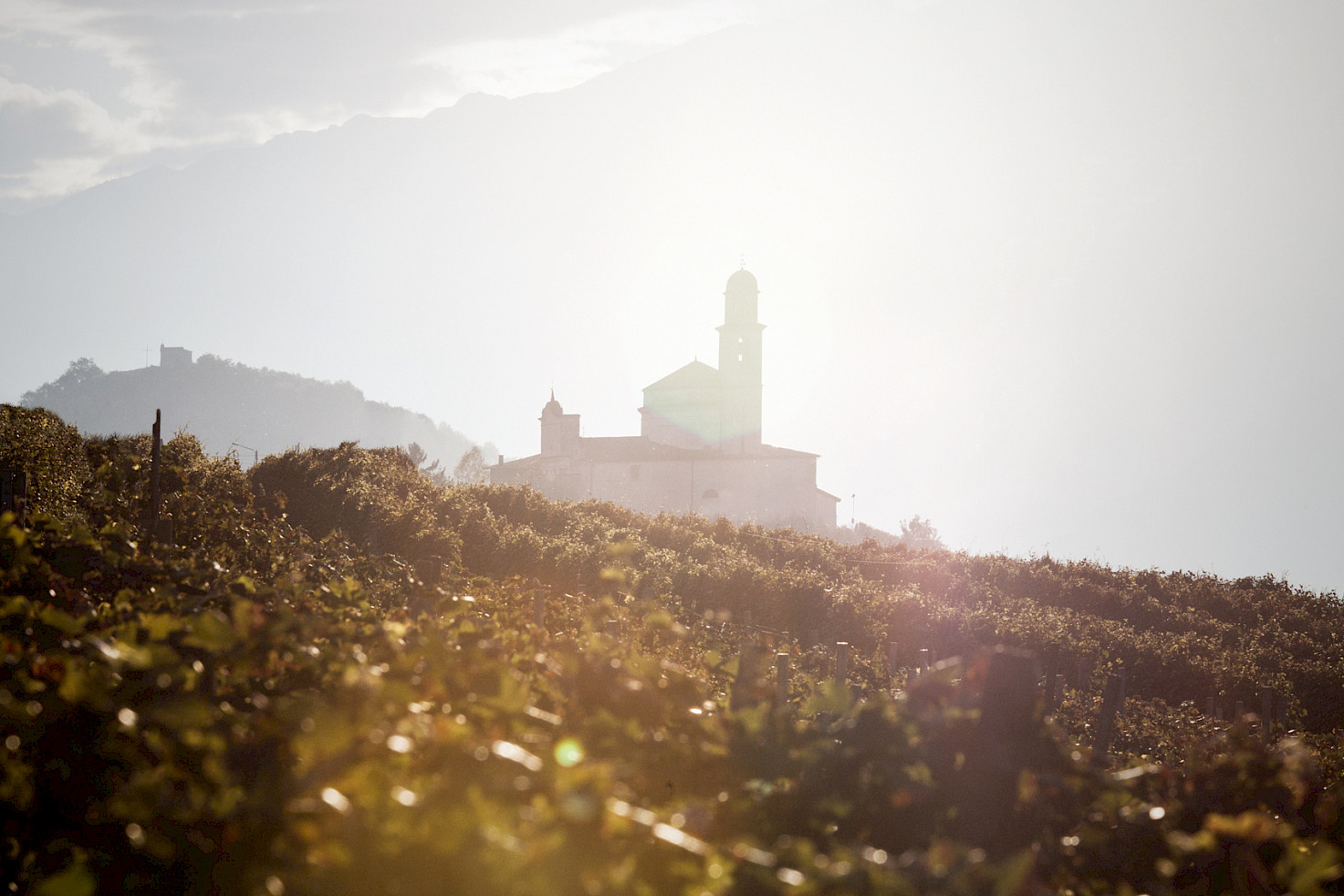
Thanks to the rocks, the poor soils, and the microclimate of Valtellina, Nebbiolo it’s a variety that generates the finest and long-living wines, complex but never complicated. Nebbiolo is definitely a native grape, which has benefited from isolation and from a long adaptation to the mountains.
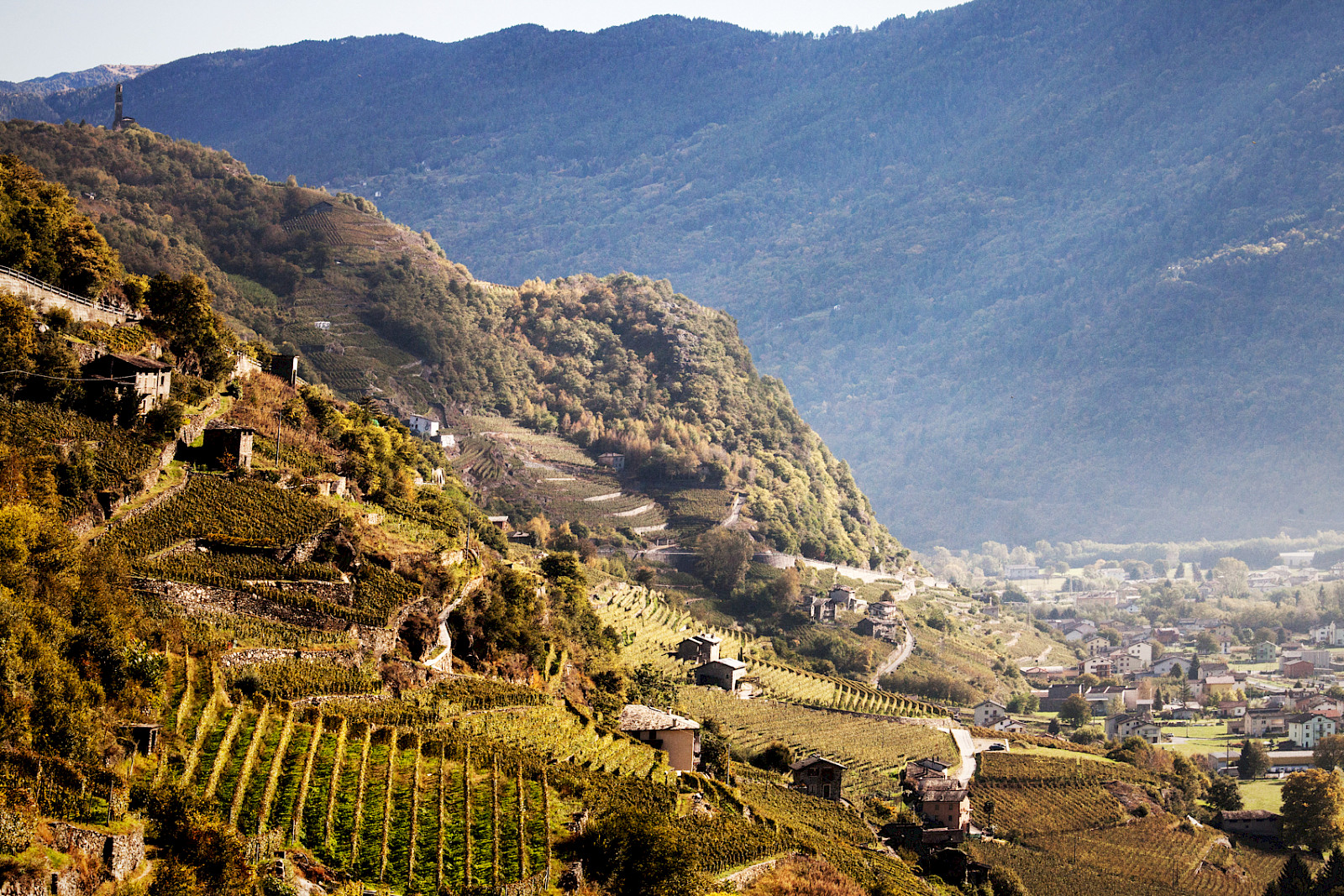
Among the allies of the Valtellina vineyard it's important to mention Rossola grape, present in the oldest vineyards and distinctive for the pale nuance of the must and its richness in sourness. Very important it’s also the role of Pignola grape variety with its vivid colour and fruity notes (of which there are also some interesting researches on sparkling processes).
Another local vineyard is Brugnola, famous for being a good table grape variety after the drying on the branches.
The presence of non-traditional varieties reflects the creativity of the producers and their desire to experiment. In Valtellina we can find rows of Sauvignon, Chardonnay, Pinot Nero, Merlot and other strong vineyards.
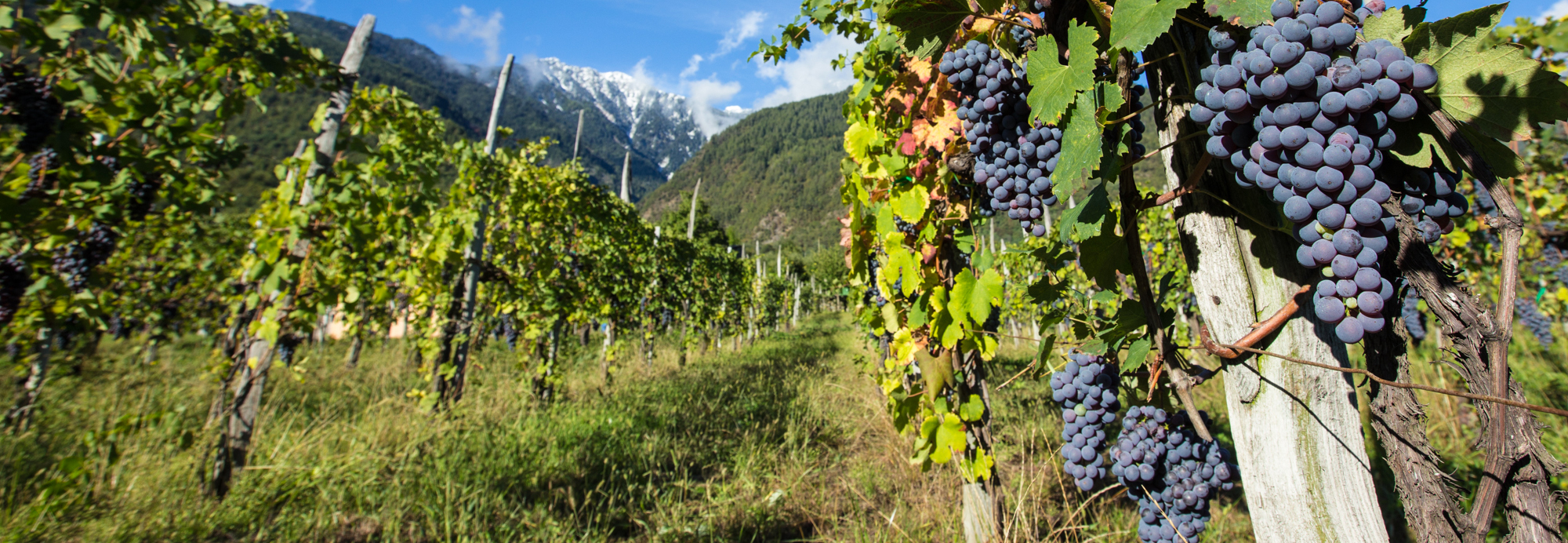
Wine-making in Valtellina means accepting a challenge of highly-skilled work carried out almost exclusively by manual work. Farmers have to climb very small and steep terraces connected to each other by stone steps.
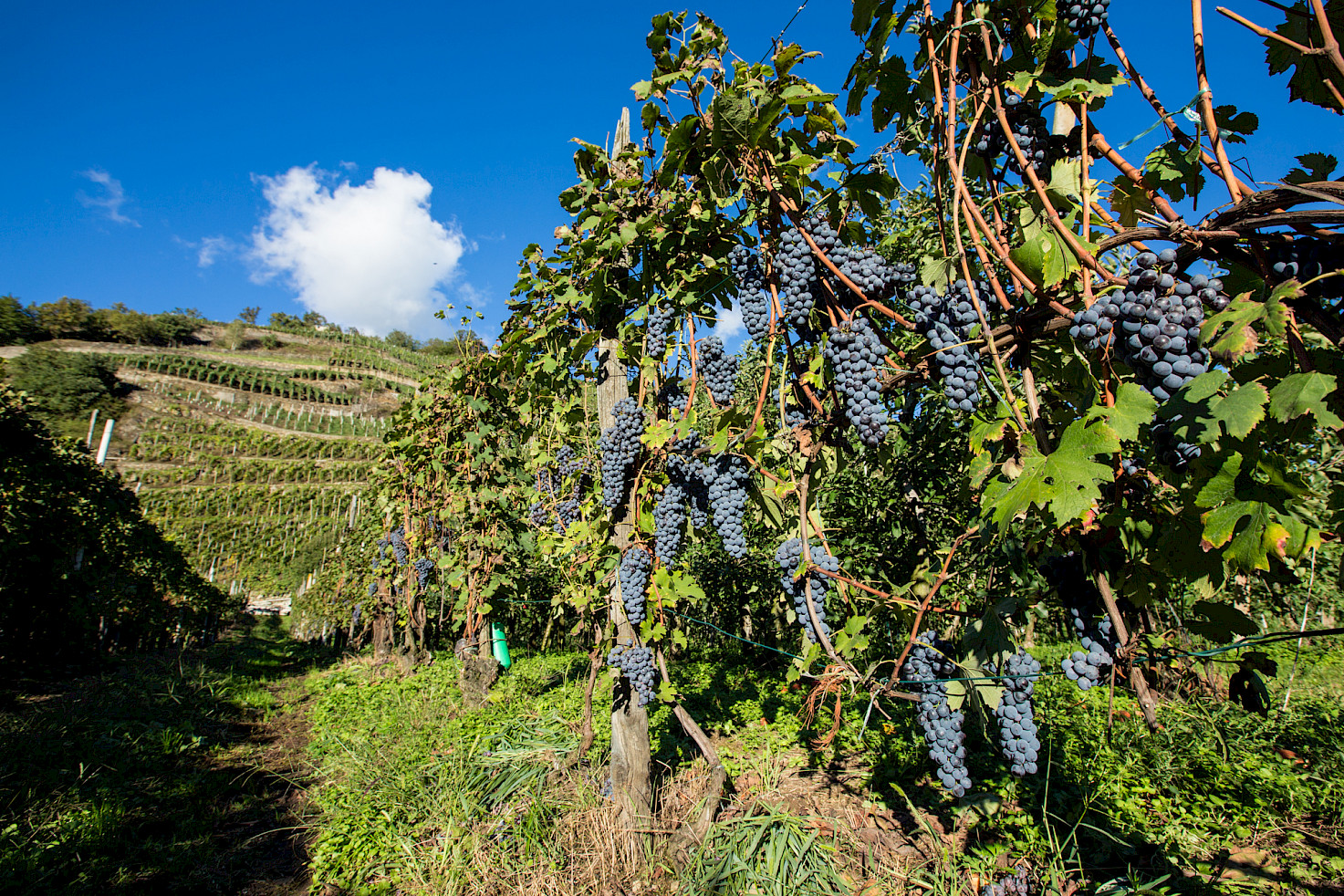
The viticultural territory in Valtellina covers a surface of 850 acres on the Rhaetian mountainside. This heritage rises from great terraced areas, between 300 and 600 metres high. Some exceptions are represented by some vineyards which can reach the altitude of almost 800 metres and some vineyards on the Orobic mountainside.
The presence of ancient stumps, an example of history and rural technique of the territory, is part of the heritage of Valtellina vineyard. The oldest vineyards still conserve the traditional bow breeding (allevamento ad archetto), they are located north-south and they have a low planting density as well as a long pruning.
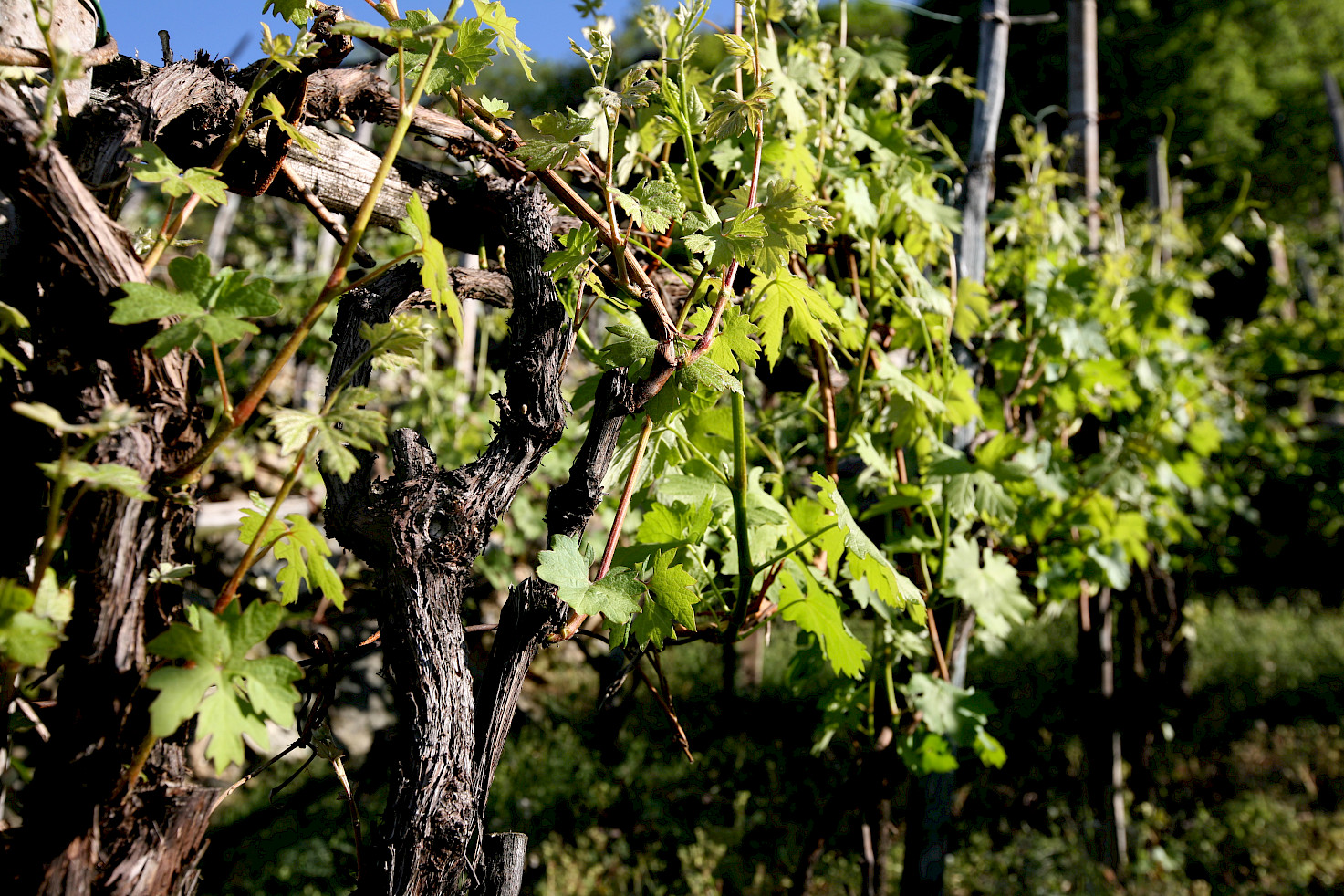
Some new vine cultivation techniques have been introduced in order to facilitate the work activity (when the slope and the creativity of the farmer permit it). In some areas vineyards have been “turned” with the position of the row east-west (a girapoggio) to enable the use of small tractors. A contribution to innovation and sustainability.
Wine-making means following necessary maintenance activities of the landscape: both cleaning and taking care of the walls are constant practises, in fact the internal structure of the terraces may be clogged by leaves, grass, gravel and other materials, impeding the water flow and increasing the risk of landslides.
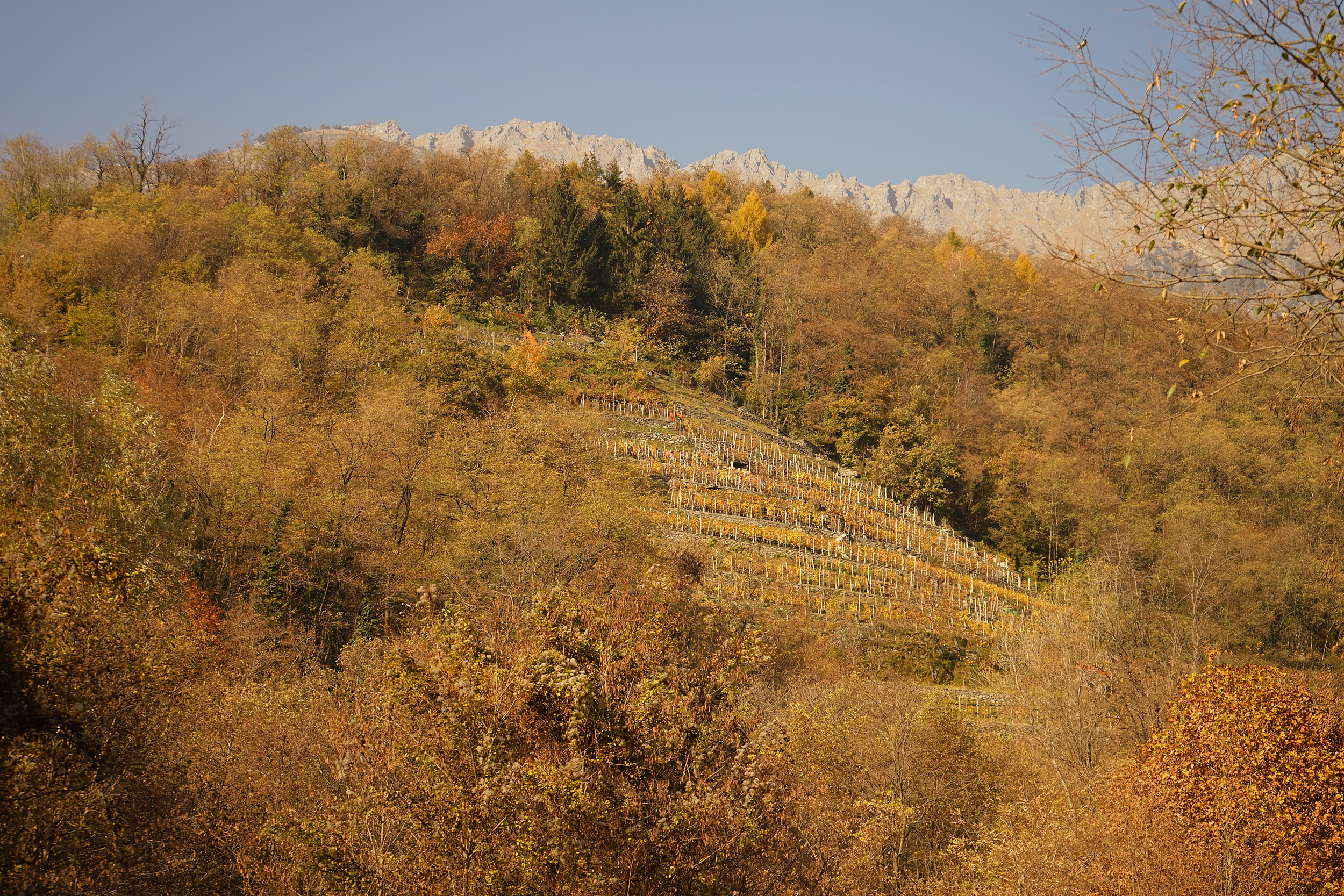
Nebbiolo and other grapes find their expressiveness along the terraces, small portions of land taken from the mountain.
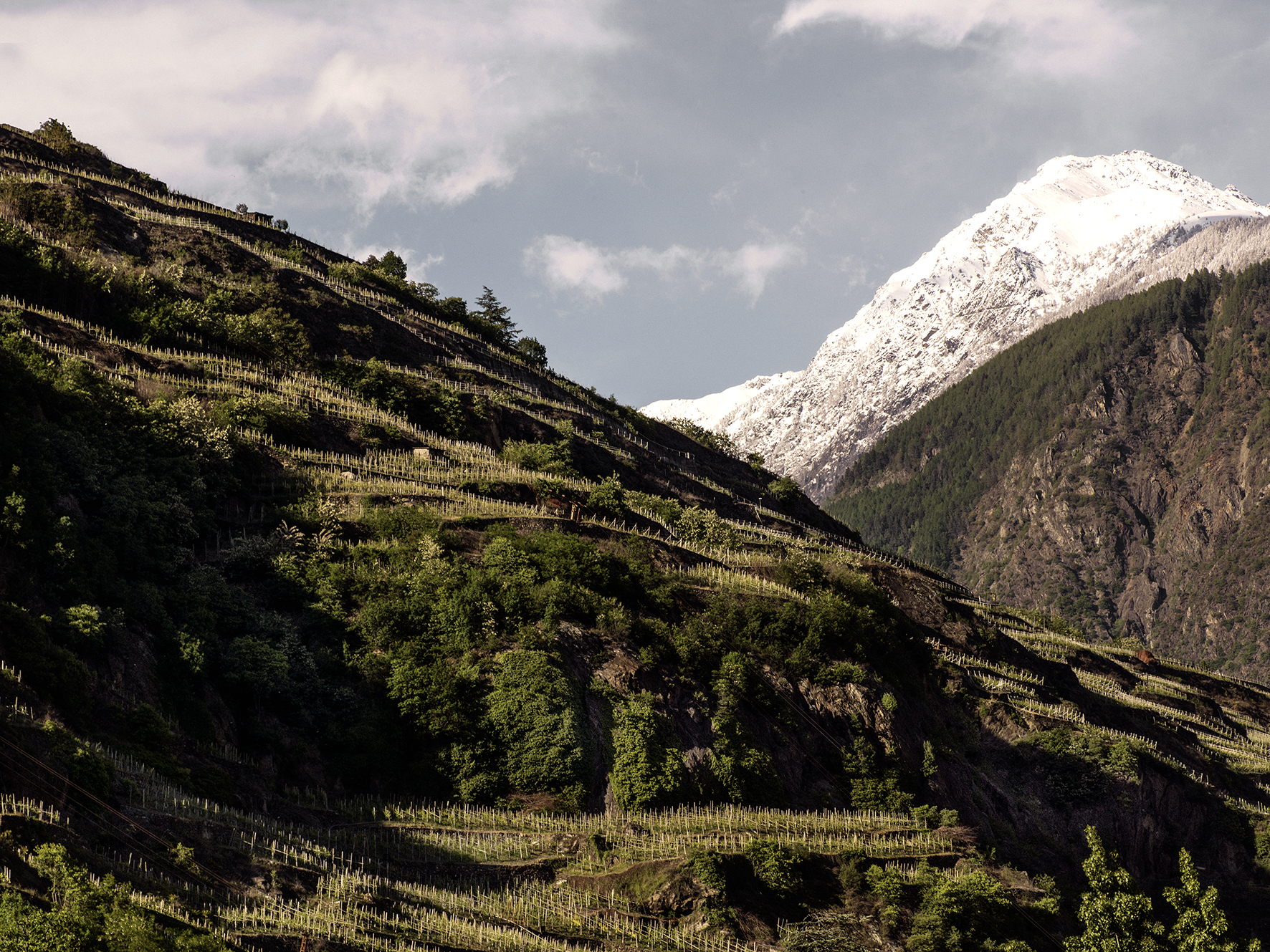
Valtellina, Nebbiolo from the Alps
